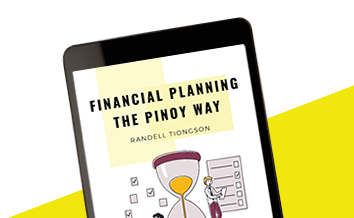Investing made easier with BDO’s EIP
By Randell Tiongson on September 4th, 2011
Re-posting Jane Uymatiao’s blog…
In a previous post, I wrote about having been invited to a workshop (Steps to Financial Peace) given by Randell Tiongson, a well-known financial planning consultant, as well as other inspirational speakers.
Randell spoke of the Philippines’ low savings rate – 16% in 2003 – the lowest in Asia. If Filipinos saved only 16% of their income, it meant that so many are not saving or not saving enough. In the workshop, Randell also mentioned that if all extra money is placed only in savings or time deposit, it earns at a lower rate than inflation. Purchasing power then is being eroded by inflation as it cannot keep up with the higher inflation. The only way to keep purchasing power ahead of inflation is to put one’s savings into higher-yielding products. Trust products are the popular investment channels available now to most people Problem is that while the minimum placements have gone down considerably to allow more people to invest in these, it is still not low enough.

I remember a time when the minimum investment amount in Unit Investment Trust Funds (UITF) was around PhP 1 million. That meant only the already rich could invest in these types of products. Everyone else had to be content with a savings or time deposit product. Over the years, however, the minimum trust investment started coming down to Php500,000, then PhP100,000 and eventually, as low as P10,000. A sponsor of the workshop happened to be Banco de Oro (BDO). During the workshop, the executives of BDO’s Trust Department, introduced a new trust product called Easy Investment Plan or EIP.
For only P1,000 a month, you can already join the ranks of those who have access to higher-yielding products.
Briefly, what are UITFs?
They are NOT deposit accounts; rather, they are trust agreements. In the case of the EIP, BDO is the trustee, tasked to make decisions as to how to invest the funds.
They earn a higher rate of return compared to deposit accounts but are not insured with the PDIC or obligations guaranteed by a bank.
An investment is assigned a certain number of “units” depending on the unit value on the date you made the investment. This unit value …
Read full post athttp://janeuymatiao.com/2011/09/03/investing-made-easier-with-bdos-easy-investment-plan-eip/
All about pooled funds, part 1
By Randell Tiongson on August 17th, 2011
 Question: I attended your seminar “Steps to Financial Peace” and you mentioned about pooled funds as a good way to invest. I wanted to ask more about pooled funds but was unable to, so I’m writing you and asking you about it. I would also like to know if I can invest small amounts but on a regular basis in those funds.—Val Baguios, International Organization for Migration (IOM) staff
Question: I attended your seminar “Steps to Financial Peace” and you mentioned about pooled funds as a good way to invest. I wanted to ask more about pooled funds but was unable to, so I’m writing you and asking you about it. I would also like to know if I can invest small amounts but on a regular basis in those funds.—Val Baguios, International Organization for Migration (IOM) staff
Answer: Val, thank you for attending my seminar and I pray that you learned much from me and the other speakers. It seems the seminar achieved its objective since you are now asking about pooled funds for your investments.
Let me start by defining what a pooled fund is, borrowing the definition from Investopedia.com: “Funds from many individual investors that are aggregated for the purposes of investment, as in the case of a mutual or pension fund. Investors in pooled fund investments benefit from economies of scale, which allow for lower trading costs per dollar (peso) of investment, diversification and professional money management.”
It looks like the definition made it more complex than it really is. Pooled funds are investments where people put their money, with an investment manager handling the investments. To explain further, let me use this analogy: Assuming you want to invest but do not know the first thing in investing in stocks or bonds. You can join a “pool” of investors who allow an investment manager …
Read full article at http://business.inquirer.net/13315/all-about-pooled-funds
Why are interest rates so low?
By Randell Tiongson on July 20th, 2011
 Question: Why are interest rates in the banks so low? Will it go up anytime soon and what are the alternatives so my money can earn better?—Dennis Poliquit, Radio DJ
Question: Why are interest rates in the banks so low? Will it go up anytime soon and what are the alternatives so my money can earn better?—Dennis Poliquit, Radio DJ
Answer: Dennis, your question is one that you can call a ‘loaded’ question, so to speak (pun intended). Let me try to simplify my answers because the way most people explain it can cause many a nosebleed, me included. In economic terms, interest rates are largely a function of the government’s monetary policy with the central bank as its chief implementor. The government, through the central bank, tries to influence the economy by manipulating interest rates according to the direction of its economic managers. When the government wants money to circulate in the economy, it tries to keep interest rates low with the belief that money will be spent and invested in businesses that drive economic growth. When interest rates are low, people are discouraged from keeping their money with the government, which is the safest and largest borrower through the sale of government securities (debt instruments).
When the government wants to control the cash circulating in the economy, it increases interest rates and you can expect the market to start putting more money in government debt paper because of its low risk. The interest of government securities, also called treasuries (bills, notes and bonds), is also the basis…
To read full column, visit http://business.inquirer.net/7863/why-are-interest-rates-so-low




